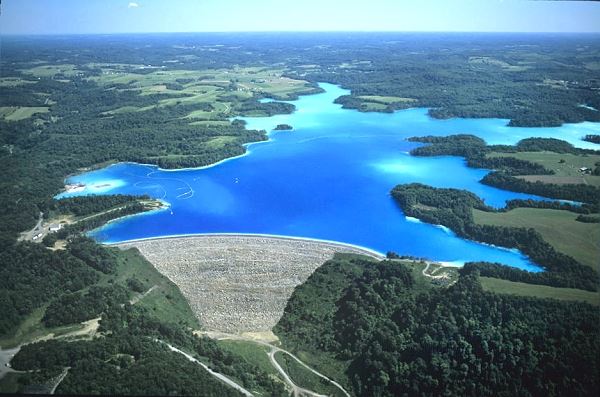By Alex Potter-Weight
 ASCE members and guests gathered at the Engineers’ Society of Western Pennsylvania on Thursday, March 17th for a joint dinner meeting of the Geo-Institute and the Environmental and Water Resources Institute. As part of the meeting, Doug Clark, P.E., and Brianne Jacoby, P.G., of Civil and Environmental Consultants presented the lecture “Groundwater Modeling and Settlement Analysis for Closure for of the Little Blue Run CCP Disposal Area.” The presentation covered various aspects of the rigorous design and analysis required to facilitate the closure of a large disposal area for coal combustion products (CCP).
ASCE members and guests gathered at the Engineers’ Society of Western Pennsylvania on Thursday, March 17th for a joint dinner meeting of the Geo-Institute and the Environmental and Water Resources Institute. As part of the meeting, Doug Clark, P.E., and Brianne Jacoby, P.G., of Civil and Environmental Consultants presented the lecture “Groundwater Modeling and Settlement Analysis for Closure for of the Little Blue Run CCP Disposal Area.” The presentation covered various aspects of the rigorous design and analysis required to facilitate the closure of a large disposal area for coal combustion products (CCP).
The Little Blue Run (LBR) disposal area is a 900+acre impoundment located in both Beaver County, PA and Hancock County, WV that has been used since 1975 for the disposal of CCP from FirstEnergy’s nearby Bruce Mansfield Generating Station. In 2012, FirstEnergy and PADEP agreed to a cessation of all disposal operations by the end of 2016, along with the development of a closure plan to be completed by 2031. The closure will eliminate disposal pumping and greatly reduce infiltration into the CCP, resulting in a significant drop in the water table. This change in effective stress would likely result in very large settlements that could impact the surface drainage and final cover system both during and following closure. In order to analyze this potential, a detailed groundwater modeling and settlement analysis program was undertaken.
 Ms. Jacoby presented the groundwater flow modeling portion of the project, which was performed using MODFLOW-2000, a three-dimensional finite-difference model developed by the USGS. After calibration to the observed groundwater levels, the model was constructed to perform a 250-year analysis of the water table draw-down. It encompassed an area of 27,000 ft by 27,000 ft and extended approximately 400 feet deep. The resulting predicted drop in the groundwater table exceeded 100 feet in some locations, with the greatest amount of draw-down occurring in the areas of the thickest CCP deposits.
Ms. Jacoby presented the groundwater flow modeling portion of the project, which was performed using MODFLOW-2000, a three-dimensional finite-difference model developed by the USGS. After calibration to the observed groundwater levels, the model was constructed to perform a 250-year analysis of the water table draw-down. It encompassed an area of 27,000 ft by 27,000 ft and extended approximately 400 feet deep. The resulting predicted drop in the groundwater table exceeded 100 feet in some locations, with the greatest amount of draw-down occurring in the areas of the thickest CCP deposits.
Mr. Clark presented the analysis of the ensuring settlement that would occur as a result of the expected drop of the groundwater table. Between 2002 and 2012, CEC undertook five separate subsurface investigations and four laboratory testing programs. The subsurface investigation programs included 38 cone penetration test soundings and 34 borings for undisturbed sampling. The laboratory testing programs included 77 consolidation tests on CCP sample and numerous other tests. The scale and sophistication of the groundwater model allowed for a detailed settlement calculations with over 2,600 discrete points of analysis. The resulting prediction included a maximum settlement of over 30 feet at the location of the thickest CCP deposit, where the draw-down was the highest. The significant grade change as a result of this predicted settlement necessitated major modifications to the post-closure surface drainage system and the final geosynthetic liner cover materials.
The presentation was based on a paper first published for the 2015 World of Coal Ash Conference in Nashville, TN. The Geo-Institute and Environmental and Water Resource Institute Chapters of the ASCE Pittsburgh Section were happy to be able to provide 1.0 PDH for the presentation. This annual joint technical dinner meeting between the two societies also included a social hour and a sit-down dinner.
